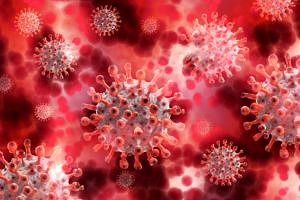Language, Visualizations and Concepts – On the Evolution of the Corona Discourse (LaViCo)
 Funded by VolkswagenStiftung, Corona Crisis and Beyond – Perspectives for Science, Scholarship and Society
Funded by VolkswagenStiftung, Corona Crisis and Beyond – Perspectives for Science, Scholarship and Society
General description
The subject of Corona is of direct concern to the entirety of the global population. However, at the beginning of the pandemic, knowledge about the virus was little and limited to a small group of experts; there was thus an asymmetry of knowledge. In the following discourse, mainly four groups of participants emerged: experts, politicians, the media and the public. Of these four groups, experts took over a central position in the communication in the first weeks of the pandemic.
Since then, science communication has been playing a decisive role in the current situation: it is needed to convey information about the epidemiological course and necessary measures against an untamed spread of the disease, and to communicate the process of gaining scientific knowledge on the subject. To achieve this goal, science communication has to depend on the media and on their way to approach and edit the topic.
The Corona pandemic offers the peculiarity that due to the extremely rapid sequence of events and the immediate need for action, the process of gaining scientific knowledge, making it available for the media and communicating it to all parties involved, has happened and is happening more or less simultaneously. It can thus be virtually analyzed in real-time, with the results forming a promising basis for future science communication regarding similar large-scale scientific topics.
Approach and aims of the study
A discourse analysis with focus on the interrelation between science and the media asks for an interdisciplinary approach: Linguistics, Visual Culture Studies and Philosophy are brought together to analyze systematic changes on the linguistic and visual level in addressing the topic, as well as in the understanding and definition of the various parties involved in the communication process. This will be done for a defined period of time.
In doing so, we assume that there have been transformations: we expect to find a variety of approaches in the beginning, of which only a few have prevailed. The focus is going to be on articles written by editorial media, i.e. newspaper and magazine articles. Although it would certainly be extremely informative to also include social media, it is not feasible within the time frame of the project envisaged here.
In a first step, a descriptive analysis of the communication processes will be undertaken, taking into account three different points of view: linguistic realizations, visualizations, and conceptualizations/modeling.
- From a linguistic point of view, it will be analyzed how conveying the information on the topic has been linguistically realized. This applies to the lexical and idiomatic level, i.e. looking into the choice of words e.g. to describe the virus and the selection of semantic frames and metaphors to interpret the situation. On the grammatical level, it is interesting to investigate whether e.g. the use of active vs. passive constructions attributes an agentivity to certain subjects or whether this is avoided. Furthermore, the narratives used will be identified and analyzed.
- From the point of view of Visual Culture Studies, it will be examined how abstract knowledge is made visible (e.g. how the virus is pictured, how the spread of the virus is translated into graphics), how the relationship between these visualizations and the reality can be described, and what effect they have on the recipients. Equally relevant to the discourse are pictures that show the effects of the Corona pandemic on everyday life. This raises the question of choice and effect. This applies the iconographic, semiotic and the formal level.
In the interplay of Linguistics and Visual Culture Studies, it will be further analyzed how these two levels relate to each other and whether they contradict, supplement or reinforce each other. - From the point of philosophical discourse analysis, it will be examined how science communication is operationalized. A first step is to establish whether the communication process can be described as rather paternalistic or participatory, and whether recipients are rather seen as consumers (typical for the relationship expert vs. lay-person) or as partners in a dialogue. For this purpose, it is necessary to differentiate the group of communicators and to determine who actually speaks (experts, journalists, politicians etc.) to whom (target groups vs. all). Of particular interest is the question whether a transformation of knowledge is discernible in the communication process and whether loss of and/or reduction or even transformation of knowledge take place. Do language and visualizations support these changes?
Contact:
Dr. Sebastian Schuol
ZGS-Projekt "Wissenschaftsreflexion"
- Telefon: +49 9131 85-22503
- E-Mail: sebastian.schuol@fau.de
Dr. Katrin Götz-Votteler
ZGS-Projekt „Schlüsselqualifikationen“
- Telefon: +49 9131 85-23048
- E-Mail: katrin.goetz-votteler@fau.de
Dr. Simone Hespers
- Telefon: +49 9131 85-23048
- E-Mail: simone.hespers@fau.de